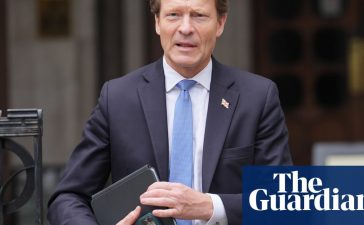Stay informed with free updates
Simply sign up to the UK house prices myFT Digest — delivered directly to your inbox.
When Rishi Sunak, then Chancellor, announced a new mortgage guarantee scheme in early 2021 it was, he said, going to “turn generation rent into generation buy”.
It will shock you to learn it didn’t really work out that way. Nor, as current chancellor Jeremy Hunt considers extending the scheme, which offers government guarantees for high loan to value mortgages, will it do much this time either. It is now trying to fix the wrong problem in a slightly pointless way.
The UK political juggling act, of keeping house prices rising while pretending that “hard working families” can “get their feet on the housing ladder in an easy and affordable way” is increasingly unsustainable.
In the past year, the market has not so much crashed as frozen. Nominal prices are down perhaps 5 per cent since their peak, more in real terms. That isn’t enough to make much difference to affordability. The UK market will manage perhaps 1mn transactions this year, said Richard Donnell at Zoopla, a fifth below the long-term average and a third below the highs of the pandemic.
With mortgage rates upwards of 5 per cent, those who can are simply waiting and seeing. So then will the big homebuilders, on whom the UK relies for the vast bulk of its house construction. These companies adjust their building rates to match sales. Barratt, the sector bellwether, said last week that reservation rates had improved but remained well below last year’s (already depressed) levels from July to early October. It thinks the market will remain subdued for two years.
The ideas surfacing ahead of next month’s autumn statement are more of the same, after years of attempts to pump demand. Changing the rules to make it easier for buyers to use ISAs and other savings products to buy property makes some sense. Extending the mortgage guarantee scheme, which underwrites 90-95 per cent LTV mortgages for properties up to £600,000 and is slated to end in December, makes a difference only at the margins.
The existing scheme has only been used for about 37,000 purchases since inception, or about a fifth of the high LTV market each year. That suggests that, unlike after the financial crisis when a similar guarantee helped restart such lending, the banks largely came back to the market under their own steam.
The bigger problem is affordability, said Andrew Wishart at Capital Economics. Two years ago, at a mortgage rate of 1.3 per cent, a monthly repayment of £1,000 translated to a mortgage of £298,000, he calculated. With mortgage rates of 5.5 per cent, the same repayment only gets you £176,000. Until house prices, or mortgage rates, fall substantially or incomes rise, the affordability of repayments is the biting constraint in the market.
Getting in the way of that adjustment, through a bigger help-to-buy-style intervention, would be unwise. The real terms fall in house prices to date is about half what it was after the financial crisis, without the shock of big drops in advertised prices. As the government prepares to haul in the banks to talk about first-time buyers, that is — according to brokers — the part of the market holding up best in terms of activity. A dysfunctional and miserable rental market means those are the buyers that will stretch themselves rather than wait. In parts of the country, buying is still cheaper than renting, even at today’s rates.
“This is a systemic problem that we keep trying to fix with one more little tweak or one more little gimmick,” said Toby Lloyd, consultant and former special adviser to Theresa May, who argues the terror of negative equity is increasingly unfounded. Only one in four households has a mortgage. Affordability checks and other limits have curbed riskier lending since 2015.
Better, says Lloyd, to focus support on helping those worst affected by the fall in house prices, including shared owners and those who stretched themselves to buy, particularly in the past couple of years.
That last camp is likely to include recent first-time buyers and some of those who used the now closed Help to Buy equity loan scheme. In other words, parts of Generation Rent that the government has already helped once.











